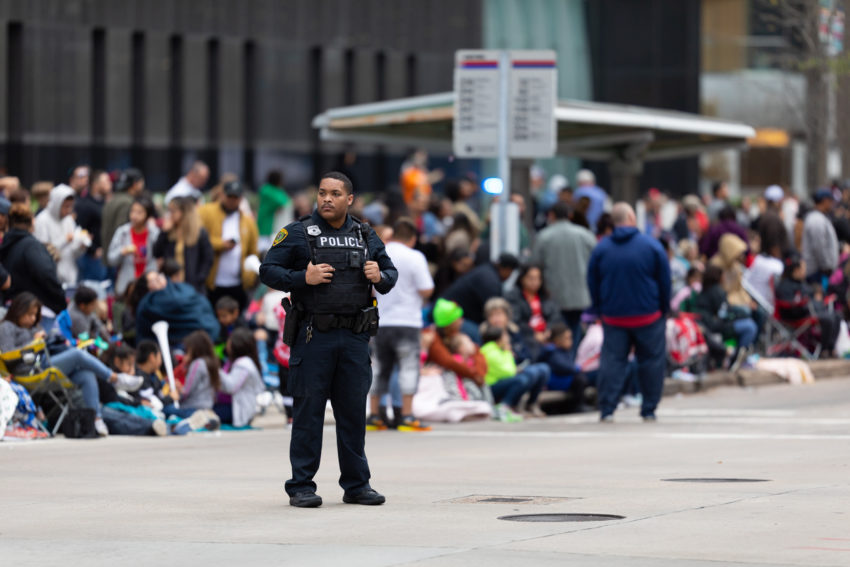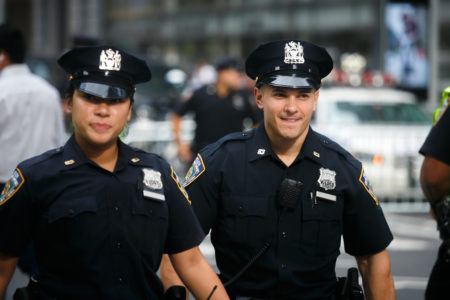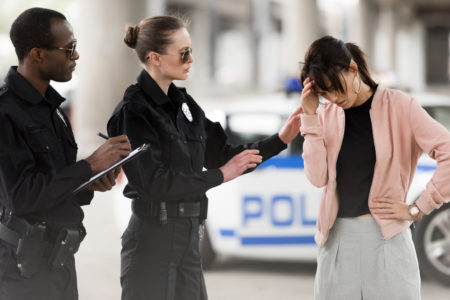
Share On Social!
Across the country, police departments are making efforts to diversify their workforce to better reflect the populations they serve.
With more Latino, Black, and other non-white police officers, law enforcement may have a better opportunity to connect with the community.
“Having better representation within the department may help address some of the reservations about police,” according to WGN9.
However, many police departments are facing challenges in recruiting diverse officers.
Cities That Are Diversifying Police Departments
Despite hiring more people of color in the past 30 years, the majority of police departments are still predominately white and do not proportionately represent people of color.
“The share of minority officers nationally has nearly doubled in three decades, growing from 14.6 to 27.3 percent since 1987, according to the U.S. Bureau of Justice Statistics. But that still doesn’t equal the share of minorities in the U.S., at 37.2 percent,” according to PEW Research study.
Many states and cities want their police departments to better reflect the people they serve.
The Illinois State Police is one of the departments that is working on diversifying.
They started by recognizing that the Latino population (20%) is not represented proportionally in their police force.
“We don’t have a huge number of Latinos within the Illinois State Police,” said Master Sergeant Hector Alejandre, according to WGN9. “We are less than 10 percent.”

Having more Spanish-speaking police officers would help the community feel more comfortable, according to Alejandre.
“When you can communicate with someone stranded and they tell you they don’t speak English, we can say, ‘That’s ok, I speak Spanish and I’m going to help you and get you home safe,’” Alejandre said, according to WGN9.
Denver police and fire departments are also seeking to recruit more diverse candidates, as their applicants in the last year were predominately white.
“In 2019, more than 600 white men applied for Denver police officer testing compared to about 250 Latinos and 90 Black men,” according to The Denver Channel.
Denver police and firefighters say having a diverse workforce will improve their ability to work in their communities.
“I am a better firefighter if I have a Latina or a Black gentlemen working with me, so that we have the capability to infuse our social awareness to provide the best service for the citizens of Denver,” said Denver Fire Captain Greg Pixley, according to The Denver Channel.
Omaha Police are making progress toward their goals of diverse recruitment, although they still have a way to go before equally reflecting the population.
“Omaha Police Lt. Ken Fox has seen the number of Black officers grow from 60 to 79. They make up 9% of the department’s sworn personnel. The number of Hispanic officers also grew, from 57 to 91. Overall, people of color account for about 22% of the sworn police personnel,” according to the Omaha World-Herald.
While some are making progress, many police departments are struggling with recruitment.
Challenges to Diversifying Police Departments
Sioux City, Iowa is lacking in Latino police officers, especially compared to the city’s population.
“The city has a Latino population of 19.1 percent, but just 3.2 percent of the officers on its police force are Hispanic,” according to the Sioux City Journal.
The Sioux City Police Department (SCPD) has struggled to hire diverse candidates, despite consulting leaders in communities of color on how they can diversify.
“We’ve looked at every avenue,” said Lt. Chris Groves of the SCPD, according to the Sioux City Journal. “We’re always open to suggestions if people have an idea how to do that. We simply just don’t get the applicants.”
Police officers in the SCPD say that more Latino officers would help bridge the gap between incarcerated non-English speakers.
“As Siouxland’s Latino population has grown, [Woodbury County Sheriff Dave Drew] said having Hispanic corrections officers employed at the Woodbury County Jail who can speak and interpret Spanish has been helpful. He said a diverse jail staff can also break down barriers with minority inmates,” according to the Sioux City Journal.
Sioux City is not the only city struggling to recruit diverse police officers. Many police departments are discovering a resistance from communities of color to join forces.
Waco has also struggled with recruitment of diverse police officers. This could stem from Texas historically having all-white police departments.
“Many, many years ago in Texas, the police forces in this state were all white and male, and I don’t mean that predominately. That was just the way it was. Even in African American communities and Latino communities, the police officers all were white,” said Charley Wilkison, executive director of the Combined Law Enforcement Associations of Texas, according to the Waco Tribune-Herald.
Along with the historical racial lines, a fear of the police has strained recruitment from communities of color.
“When you’re dealing with a demographic that is from a different country and speaks a different language, there is because of what we see in the media that fear factor from local government or a local police force,” said Waco City Council Member Hector Sabido, according to the Waco Tribune-Herald.
City officials hope that they can regain trust in Latino and Black communities.
“But the message I’ve been trying to work on, especially during COVID-19, is that the police are not going to take you away and send you to ICE,” Sabido said. “The police are here to help, whether it’s patrolling neighborhoods or arriving on emergency scenes or just answering questions.”
So How Can Police Departments Diversify?
Diversity in police departments is important to help foster good relationships with communities of color.
The Justice Department recommends police departments take these steps to increase diversity:
- Reconsider physical and written tests that may impact female and non-white applicants.
- Allow applicants with prior arrests to apply for exemptions.
- Engage stakeholders to help create diversity reflective of the community.
- Use proactive and targeted community outreach efforts.
- Build partnerships with educational institutions and create internship programs.
Increasing diversity is only one way for police to improve how they serve their communities.
“Officials acknowledge that increasing diversity in police departments must be combined with other reforms, such as beefed up investigations of officer-involved shootings and training on implicit bias and other topics,” according to the Washington Post.
Another way to help communities of color is by declaring racism a public health crisis.
Systemic racism and discrimination make it harder for Latinos and Black people to get healthcare, housing, transportation, education, employment, healthy food, safe treatment by police, all of which are worsened by the COVID-19 pandemic.
You can download and use the Salud America! “Get Your City to Declare Racism a Public Health Crisis Action Pack” to fight racism in your community.
The Action Pack will help you gain feedback from local social justice groups and advocates of color. It will also help you start a conversation with city leaders for a resolution to declare racism a public health issue along with a commitment to take action to change policies and practices. It will also help build local support.
Explore More:
Overcoming Harmful BiasesBy The Numbers
3
Big Excuses
people use to justify discriminatory behavior



